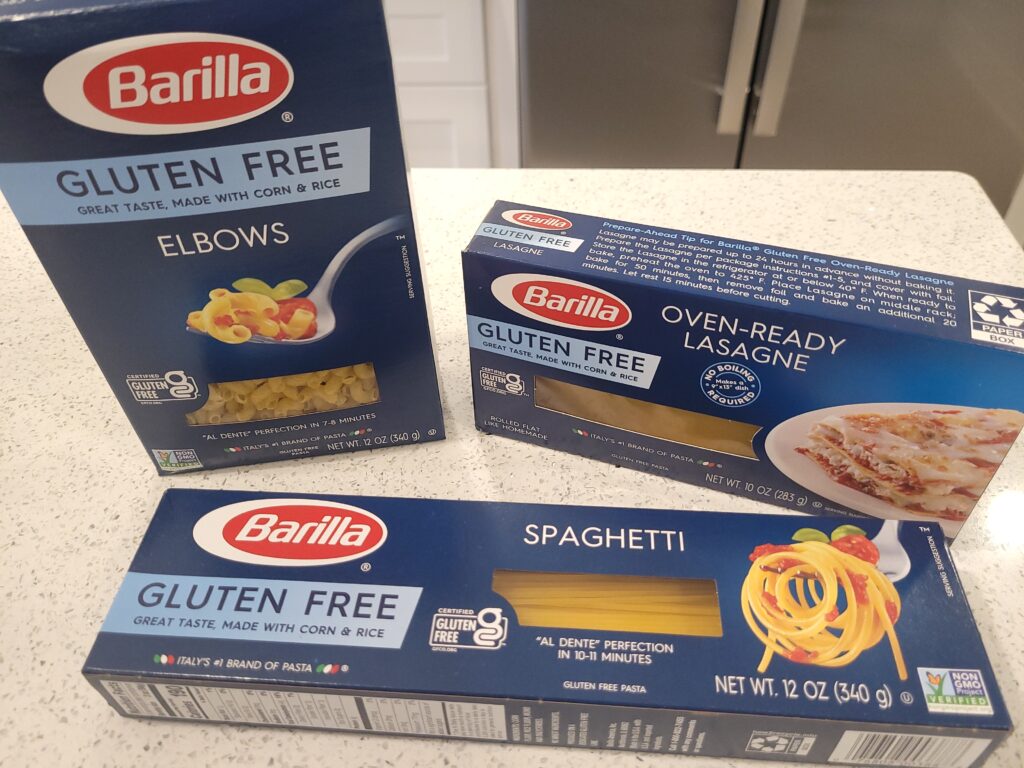When looking at a restaurant menu we are accustomed to scanning for the GF marking next to items that are gluten free. Those of us with Celiac Disease or severe gluten allergies are very careful with what we order. We also need to be very careful about who we trust to prepare our food. This is especially the case when ordering gluten free noodles/gluten free pasta. I was disappointed to learn that gluten free noodles at restaurants are not always gluten free.

Cross contamination can happen in any shared kitchen whether it is at home or at a restaurant. Those with Celiac Disease are recommended to avoid even trace invisible amounts of gluten. We generally think of cross contamination as accidental contamination. Shockingly there is a very common practice in commercial kitchens that I think of as cross contamination by negligence instead of by accident.
[the_ad_placement id=”manual”]
After being diagnosed with Celiac Disease I had to become knowledgeable about not only what foods contain gluten, but also how naturally gluten free foods can become contaminated by gluten.
My family has had a tradition of going out to eat once a week together. We don’t have to cook for a night and get to talk and relax together. As I learned more about cross contamination I realized that as a Celiac I need to be aware of kitchen practices and how they will vary from business to business. Some restaurants truly feel compelled to put in safe processes to provide us a safe place where we can eat. Other restaurants only want to slap the words gluten free on their menu to get more people in their doors.
If I was going gluten free to be trendy or as just a dietary preference, a little cross contamination isn’t a problem. As a Celiac I understood it is something I should do all I can to avoid. I called different restaurants to ask about their practices for cooking items that I learned are at the highest risk for cross contamination. Those items are pasta and anything that goes in a fryer.
[the_ad_placement id=”manual”]
I soon discovered many restaurants advertise gluten free pasta options on their menu which always contain gluten. They didn’t feel any shame in admitting that all of their noodles are cooked in the same water. That’s right. In the morning they prep their noodles for the day. They get a large pot of water boiling and then precook the different types of noodles one after another in the same water. They keep a single pot of water boiling throughout the day that they use to quickly warm a portion of noodles again at the time of your order. Ever wonder why you sometimes find a different noodle type in your pasta containing dish? This is why.
Cooking gluten free noodles in water where gluten containing wheat noodles were cooked exposes them to a large amount of contamination. They are coated with invisible gluten particles by this process. This is not a safe practice for Celiacs and would also preferably be avoided by those with sensitive gluten allergies. Remember, those with Celiac Disease are supposed to avoid even invisible amounts of gluten because it can still cause damage to your body.
[the_ad_placement id=”manual”]
Just as shocking I was told by management that they do the same with their larger vegetables such as broccoli. They precook them in the wheat noodle contaminated water in the morning. At the time of your order they flash warm them prior to serving in the same gluten contaminated water where the wheat noodles and gluten free pasta are warmed.
Luckily I was able to find a number of local restaurants that have proper kitchen procedures for cooking gluten free noodles in a safe manner. Accidental cross contamination is always a possibility even though we try our best to avoid it. Cross contamination as a product of bad kitchen processes is most concerning. Many of us are not aware of this problem.
When dining out I highly recommend contacting the restaurant before you go. Try to call at a time of day outside of typical meal times when they are less busy. Ask about their procedures. Ask questions about their cross contamination procedures, especially when it comes to pasta and fried foods.
[the_ad_placement id=”manual”]
Leave a Reply